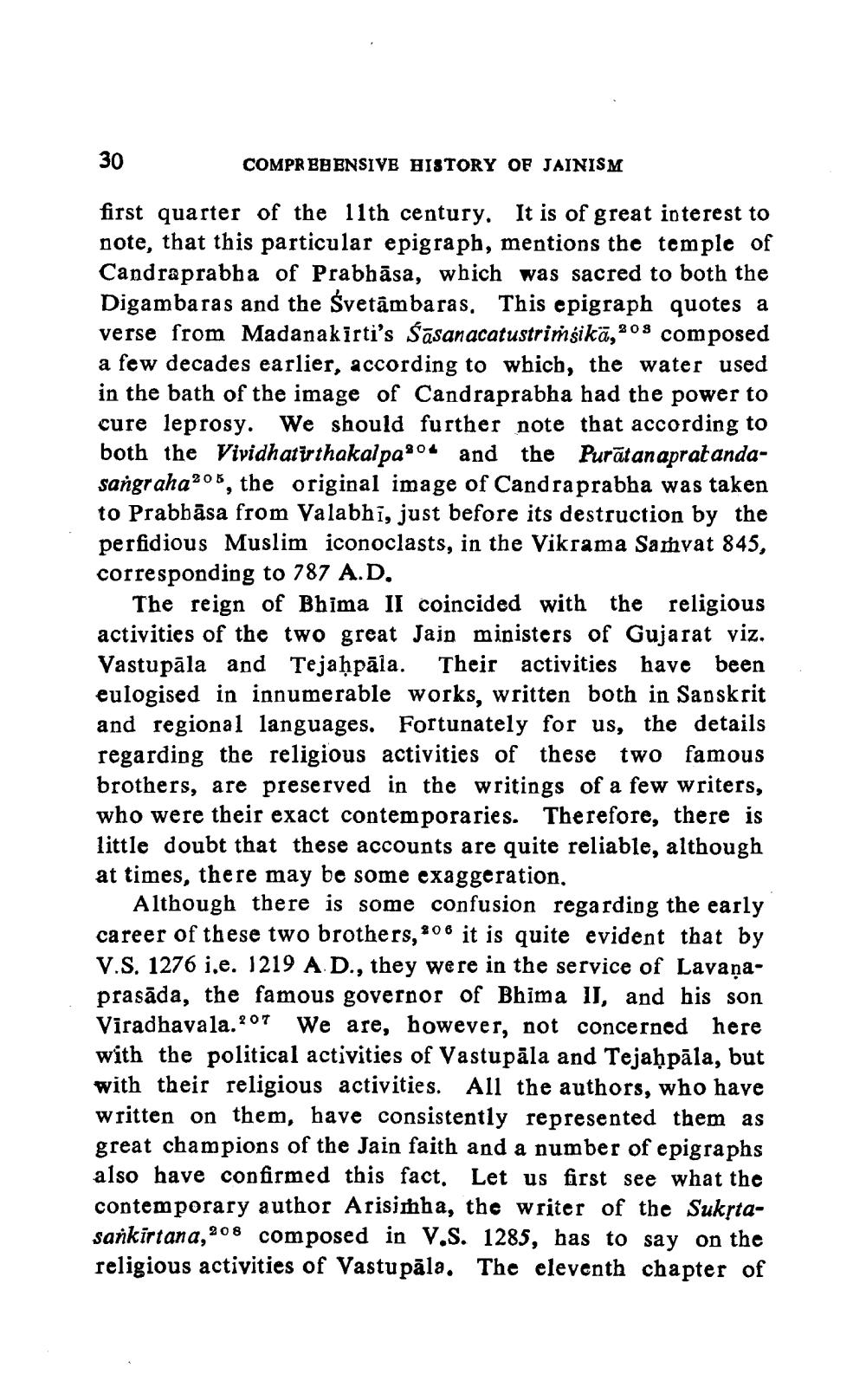________________
30
COMPR BB ENSIVE HISTORY OF JAINISM
first quarter of the 19th century. It is of great interest to note, that this particular epigraph, mentions the temple of Candraprabha of Prabhāsa, which was sacred to both the Digambaras and the Svetambaras, This epigraph quotes a verse from Madanakirti's Śāsanacatustriņšikā, 208 composed a few decades earlier, according to which, the water used in the bath of the image of Candraprabha had the power to cure leprosy. We should further note that according to both the Vividhatirthakalpa 304 and the Purātanapratandasangraha206, the original image of Candraprabha was taken to Prabbāsa from Valabhi, just before its destruction by the perfidious Muslim iconoclasts, in the Vikrama Samvat 845, corresponding to 787 A.D.
The reign of Bhima II coincided with the religious activities of the two great Jain ministers of Gujarat viz. Vastupāla and Tejahpāla. Their activities have been eulogised in innumerable works, written both in Sanskrit and regional languages. Fortunately for us, the details regarding the religious activities of these two famous brothers, are preserved in the writings of a few writers, who were their exact contemporaries. Therefore, there is little doubt that these accounts are quite reliable, although at times, there may be some exaggeration,
Although there is some confusion regarding the early career of these two brothers, *08 it is quite evident that by V.S. 1276 i.e. 1219 A.D., they were in the service of Lavaņaprasāda, the famous governor of Bhima II, and his son Viradhavala.207 We are, however, not concerned here with the political activities of Vastupäla and Tejahpāla, but with their religious activities. All the authors, who have written on them, have consistently represented them as great champions of the Jain faith and a number of epigraphs also have confirmed this fact. Let us first see what the contemporary author Arisimha, the writer of the Sukstasankirtana, 208 composed in V.S. 1285, has to say on the religious activities of Vastupāla. The eleventh chapter of




